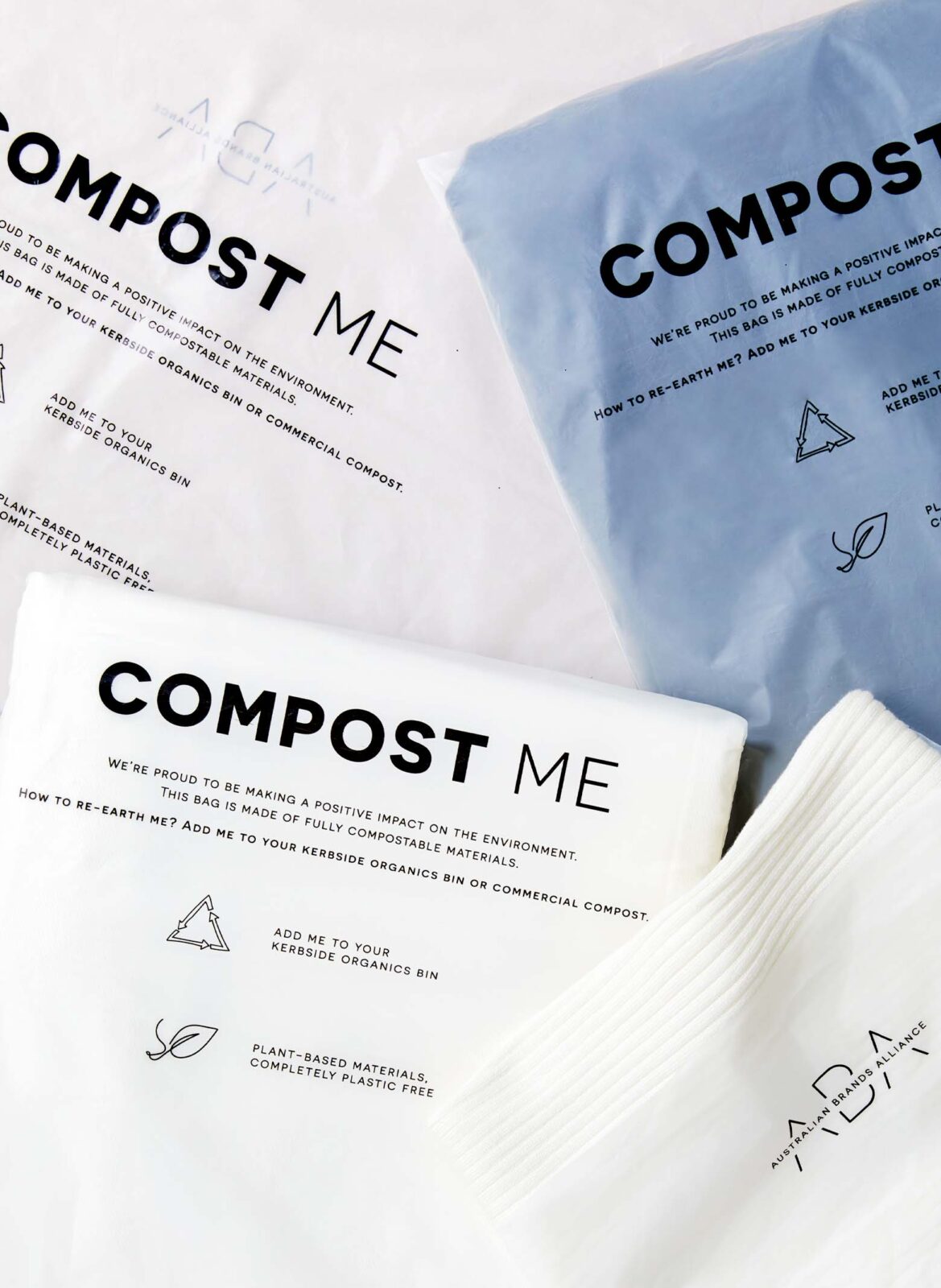COMPOSTABLE PACKAGING
from plastic to plant-based
We know we aren’t perfect but we really do care about the earth. That’s why we’ve been working hard to transition our packaging from
plastic to plant-based materials.
Say hello to our new garment and mail bags, which comes from the earth and can be returned to the earth.
Our new bags are made from a combination of plant materials, making them biodegradable and easily recyclable. Once broken down the bags can safely return to the earth, with no toxic micro-plastics in (or out of) sight.

From plastic to plant-based
So, what does it all mean? Instead of using plastic made from petrochemicals and fossil fuels, compostable plastics (like ours) are made from renewable materials such as corn, potato, and tapioca starches, cellulose, soy protein, and lactic acid. We believe these are better because it’s sourced from nature and can return to nature with less harm than a traditional plastic bag.
When commercially composted at 60°C, 90% of our packaging is biodegradable within 180 days. Once fully decomposed, the end result is carbon dioxide, water and biomass in compost.



Compostable plastics
Compostable plastics, such as those found in our bags are made from polylactic acid (PLA). Don’t be distracted by the name, PLA is simply made from dextrose, a sugar produced by plants. On average, the production of PLA resin uses about 52% less energy and 80% less greenhouse gases than the production of petroleum-based resins.
Compostable plastics
Compostable plastics, such as those found in our bags are made from polylactic acid (PLA). Don’t be distracted by the name, PLA is simply made from dextrose, a sugar produced by plants. On average, the production of PLA resin uses about 52% less energy and 80% less greenhouse gases than the production of petroleum-based resins.



PLA vs. PLASTIC – What's the difference?
1. Non-toxic
2. PLA is made from plants instead of petrochemicals from fossil fuels
3. It uses less energy and creates fewer greenhouse gas emissions in production
4. Breaks down in commercial composts within 3-6 months
Frequently Asked Questions
Can I put my bag in my home compost?
Unfortunately not. Our bags need industrial technology to be fully composted. In a nutshell, commercial composts have the ability to compost at a hotter temperature which allows a better breakdown of our bag. A home compost is estimated to have an average 30C temperatures, where commercial systems generally run 60C and above.
How do I re-earth my bag?
Simply add your bag to your kerbside organics bin. Not sure if you have one? Check in with your local council and order a bin if needed. Avoid using soft plastics or co-mingled recycling as it may contaminate the collection and the load can be rejected.
What if it ends up in landfill?
To do our bit in protecting the planet, it’s best to avoid putting your bag in your usual rubbish bin. While our bags will break down in landfill, methane will be produced in the process, unlike breaking down in a compost.

